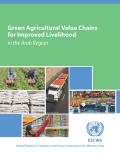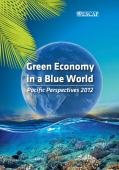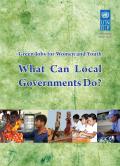Azerbaijan has made significant strides in improving its economy over the past decade, as it embarked on a market-based economy and recovered from a significant downturn following the breakup of the Soviet Union. As a result, the government is now looking to implement a policy for country’s transition to a low-carbon, resource efficient and socially inclusive economy. This study presents an assessment of Azerbaijan’s economy, looking at ways that will foster such transition.
This guideline provides practical tools for city planners and decision makers to reform urban planning and infrastructure design according to the principles of eco-efficiency and social inclusiveness. It includes case studies from the Republic of Korea, the Philippines, Japan and Sri Lanka.
The report has been developed within the framework of UNESCAP Pilot Project Application and Integration of the “Green Growth” tools and policies into the strategic planning system of the Republic of Kazakhstan” with the support of the governmental bodies of the Republic of Kazakhstan and Korean International Cooperation Agency (KOICA).
The report informs the public about the green growth concept. It contains a methodology of the concept and assessment of eco-efficiency of national economy, an overview of the use of the green growth principal tools in Kazakhstan and recommendations on introduction of green growth principles into the strategic planning system.



This paper presents examples of policies and programmes initiated by local governments that promote green jobs especially for women and youth. The aim is to inspire more local governments to consider policies that address the economic, social and environmental dimensions of sustainable development. The report includes case studies from South Africa, the Phillippines, Senegal, Bolivia, Argentina, Colombia, Bangladesh, Zimbabwe, Lesotho, Burundi and Viet Nam.
This report summarizes the main findings of a national green jobs assessment conducted in Mexico in 2013. The assessment revealed how many green jobs currently exist in the country and which sectors show the strongest potential for further green jobs creation.
This report seeks to provide practitioners with the tools and information needed to respond to the public expenditure policy and management challenges arising from climate change. It is a series of notes and supporting materials written as a first step towards consolidating current research and international experience, identifying emerging practice and providing practical and applicable guidance for staff of central finance agencies, development agencies, environmental agencies and other international organizations working on climate change issues. In addition to emphasizing the importance of strengthening national systems throughout, the Sourcebook focuses on the specific public expenditure policy and management challenges posed by climate change, such as decision-making in the face of uncertain future climate conditions, expenditure planning for extreme weather and climate events, the lack of agreed budget definition and classification of climate change activities.
In order to harness opportunities afforded by an inclusive green economy approach, UNDP supports an array of nationally-defined development activities, applying corporate best practices incorporating environmental, governance, poverty reduction, capacity development, and gender perspectives. UNDP looks at its operations which have as many as possible of the following characteristics:
• emphasize the efficient and sustainable use of natural resources in a low-carbon pathway
• decrease (or protect against) environmental risks, emissions and pollution
• lead to increased income opportunities and/or employment generation
• lead to greater social equity and inclusion.
This report summarises the outcomes of the joint AfDB-OECD workshop, titled Enabling Green Growth in Africa, hosted by the Government of Zambia in Lusaka on January 15-16, 2013 and another two-day workshop on Strategic Environmental Assessments (SEA) and Green Economy that follows, organised by the OECD DAC SEA Task Team. The objective of the workshops was to facilitate an exchange of perspectives between regional member countries (RMCs) and development partners; and to explore the rationale and enabling environment for green growth in Africa through, notably, the sharing of country experiences. The report highlights how the outcomes of the two workshops will inform current and future green growth work in both organisations.
